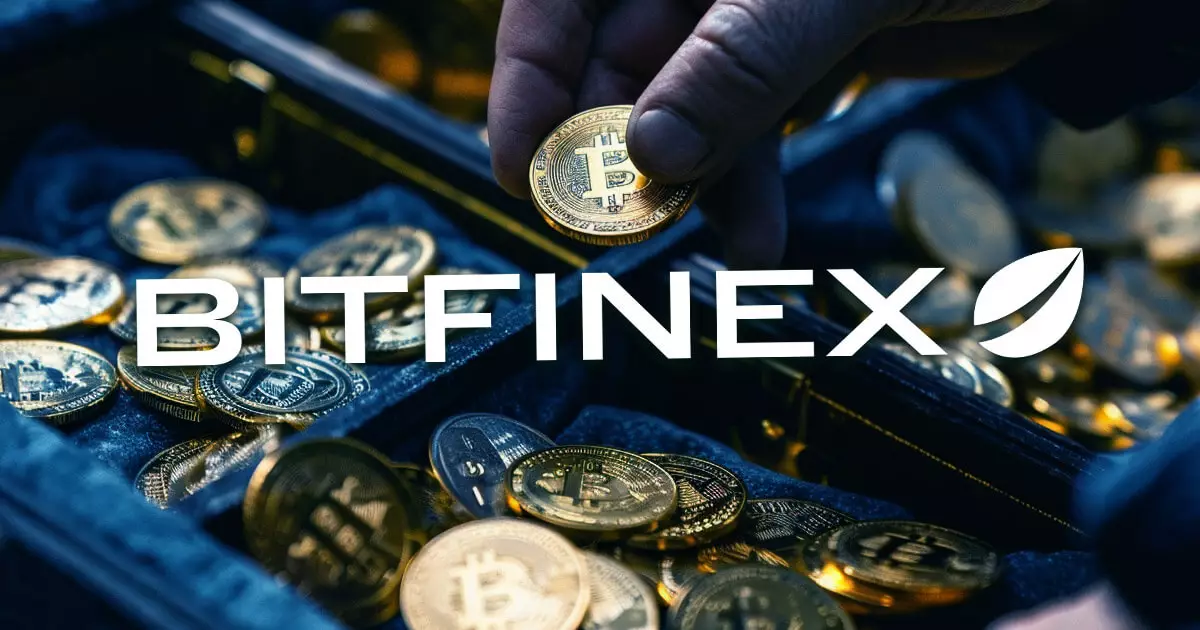The infamous 2016 hack of Bitfinex, one of the largest cryptocurrency exchanges at the time, resulted in the theft of approximately 120,000 BTC—a loss that was both staggering in scope and detrimental to the crypto markets. In recent government filings, it has come to light that Bitfinex may be categorized as the sole entity entitled to restitution for the theft, potentially limiting the prospects for individual account holders who were also affected. The implications of this classification are significant not only for Bitfinex but also for the broader cryptocurrency ecosystem, raising questions about victim status, recovery efforts, and the exchange’s ongoing relationship with its users.
According to the recently unearthed documents, the U.S. government is reportedly unaware of any other victims aside from Bitfinex itself, referred to in the filing as the “Victim Virtual Currency Exchange.” This assertion contrasts sharply with the significant losses suffered by account holders, who were forced to endure reduced account balances after Bitfinex adopted a controversial method to share the losses incurred from the hack. Initially, Bitfinex reduced all customer account balances by 36%, issuing BFX tokens to customers as a form of compensation, an action that incited considerable debate within the cryptocurrency community regarding fairness and transparency.
The ramifications of being labeled as the “sole victim” under the Crime Victims’ Rights Act (CVRA) and the Mandatory Victims Restitution Act (MVRA) may expedite the complex and prolonged recovery process. Rather than dispersing restitution among numerous claimants, focus turns to the exchange itself, a move that could streamline legal efforts to reclaim the stolen assets. Such a classification solidifies Bitfinex’s role as the primary entity engaged in ongoing negotiations with law enforcement agencies as they work to secure the return of the stolen Bitcoin.
Following the hack and through the tumultuous recovery efforts, Bitfinex has made commitments to various token holders, specifically those in possession of Recovery Right Tokens (RRTs) that were issued in response to the hack. These obligations illustrate a more complex financial landscape for Bitfinex, wherein recovered funds from U.S. law enforcement will primarily be directed towards redeeming RRTs for customers rather than being distributed as immediate reparations for the stolen Bitcoin. The exchange has explicitly stated that the amount recovered will not suffice to redeem all RRTs, currently totaling 30 million in circulation—an indication that many users may remain underserved despite formal restitution efforts.
Moreover, once all RRTs are addressed, Bitfinex retains a significant opportunity to allocate up to 80% of any remaining assets to holders of the UNUS SED LEO token, the exchange’s native crypto asset. This provision appears to add an additional layer of complexity to the financial recoveries, as LEO token holders stand to gain indirectly based on Bitfinex’s successful recovery of stolen funds and the token’s burn mechanism. These intricacies amplify the need for a transparent approach from Bitfinex as the outcome of this legal matter unfolds.
Initial market reactions to the government filing indicate some apprehension among investors; Bitcoin prices dipped slightly following the announcement. Such fluctuations reveal an underlying anxiety about the potential reintroduction of a hefty volume of Bitcoin back into circulation, which could disrupt market dynamics. The fear of dilution may be compounded by the lingering trust issues stemming from past security breaches, making the need for trust-building measures imperative as Bitfinex confronts both its recovery efforts and re-establishing credibility among investors.
Throughout the years since the hack, Bitfinex has been both scrutinized and praised for its strategy of socializing losses through BFX tokens and adjusting account balances, which, while controversial, ultimately allowed the exchange to sustain operations and progress towards compensation for users. The successful redemption of all BFX tokens in April 2017 represented a pivotal moment, showcasing a path toward recovery that signaled resilience amid chaos.
As the narrative surrounding the Bitfinex hack continues to evolve, the determination that the exchange may be the sole entity entitled to restitution marks a critical juncture. With a focus on recovering lost assets and fulfilling commitments to token holders, Bitfinex must navigate a challenging landscape laden with expectations and scrutiny. While the situation poses numerous hurdles, it also presents an opportunity to refine transparency and establish a renewed sense of trust within the cryptocurrency community. Whether or not Bitfinex can effectively manage these dual responsibilities remains to be seen, but the implications of their choices will resonate far beyond this immediate aftermath.

